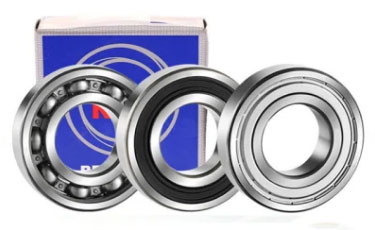Home / News / CNC Bearing Types: A Comprehensive Guide to Selecting the Right Bearings for Your Application
CNC Bearing Types: A Comprehensive Guide to Selecting the Right Bearings for Your Application
Introduction
In the world of advanced manufacturing, computer numerical control (CNC) machines are indispensable for producing high-quality, precision-engineered components. These machines rely on a complex system of moving parts, among which bearings play a vital role in ensuring smooth, accurate, and reliable operation. Selecting the right bearing type for a CNC application is critical to optimizing performance and extending the life of the machine. In this article, we will explore the various CNC bearing types, their unique characteristics, and their suitability for different CNC applications.
Angular Contact Ball Bearings
Angular contact ball bearings are designed to support both radial and axial loads, making them ideal for high-speed applications where precision is essential. The contact angle of these bearings determines their axial load-carrying capacity, with larger contact angles providing higher axial load capacity. Angular contact ball bearings are commonly used in CNC spindles and ball screws.

Deep Groove Ball Bearings
Deep groove ball bearings are versatile bearings that can support both radial and axial loads. They are characterized by their low friction and high-speed capabilities, making them suitable for a wide range of CNC applications, such as in motor-driven spindles and rotary tables.
Cylindrical Roller Bearings
Cylindrical roller bearings are designed to support high radial loads and are ideal for applications with heavy loads and high stiffness requirements. They offer excellent radial load capacity and are often used in the spindle assembly of CNC lathes and milling machines.
Tapered Roller Bearings
Tapered roller bearings can support both radial and axial loads, with the ability to handle large loads and high speeds. Their unique tapered design distributes the load evenly across the bearing, enabling them to withstand high axial and radial forces. Tapered roller bearings are frequently used in CNC machine tool spindles and gearboxes.
Needle Roller Bearings
Needle roller bearings are characterized by their small diameter and high load-carrying capacity, making them suitable for applications with limited space and high load requirements. Their compact design allows for reduced overall dimensions and weight, making them ideal for CNC machine tool linear guides and cam followers.
Thrust Ball Bearings
Thrust ball bearings are designed specifically to support axial loads and are commonly used in CNC applications where high axial forces are present, such as in vertical machining centers and multi-axis machines.
Crossed Roller Bearings
Crossed roller bearings are designed with cylindrical rollers arranged at right angles to each other, providing high stiffness, load capacity, and precision. These bearings are ideal for CNC applications requiring high rigidity and accuracy, such as rotary tables and indexing heads.
Ceramic Bearings
Ceramic bearings, made from advanced ceramic materials like silicon nitride or zirconium oxide, offer several advantages over traditional steel bearings, including higher speed capabilities, improved precision, and extended service life. Ceramic bearings are increasingly being used in high-performance CNC applications, such as high-speed spindles and precision positioning stages.
Conclusion
Selecting the right CNC bearing type is crucial for optimizing the performance, accuracy, and reliability of your CNC machine. Understanding the unique characteristics and suitability of each bearing type for different CNC applications can help you make an informed decision and ensure the best results from your manufacturing processes. By considering factors such as load capacity, rigidity, speed capabilities, and space constraints, you can choose the ideal bearing type for your specific CNC application, ultimately enhancing the performance and extending the life of your CNC machine.
- Previous: Ceramic CNC Bearings: Revolutionizing Precision and Performance in Modern Manufacturing
- Next: CNC Bearing Load Capacity: A Critical Factor in Optimizing Performance and Reliability













